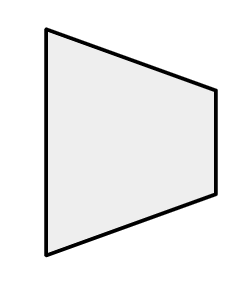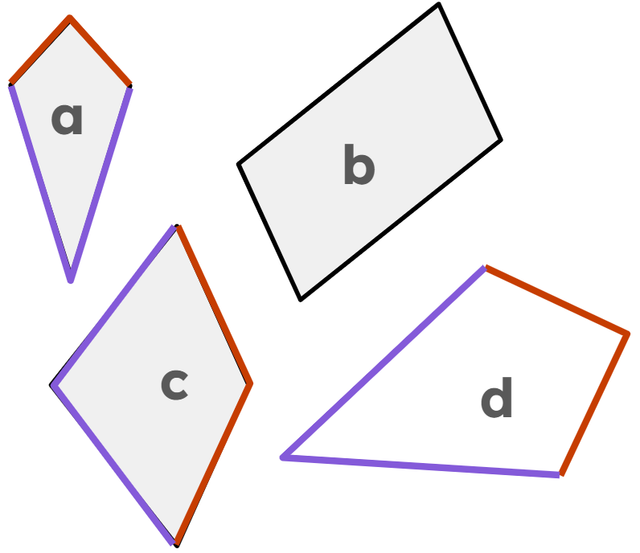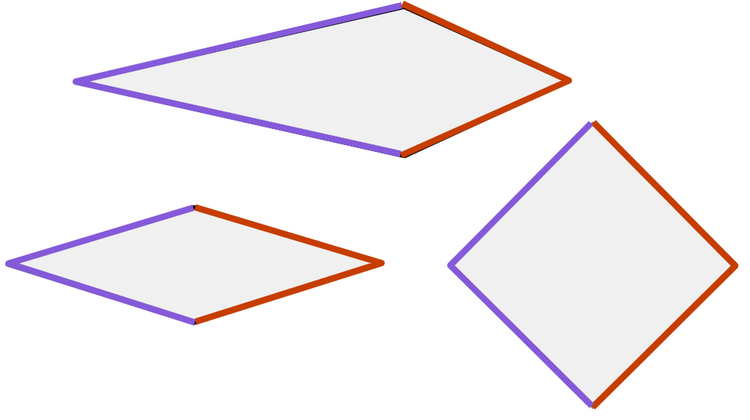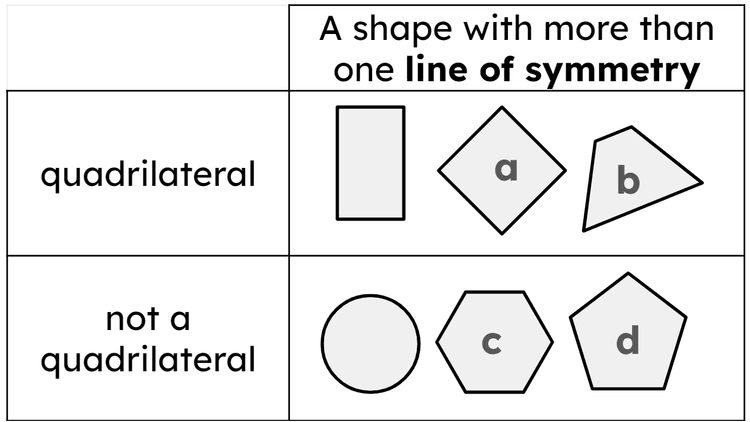Myths about teaching can hold you back
- Year 4
Investigate lines of symmetry in 2D shapes by folding
I can use folding to investigate lines of symmetry in different 2D shapes.
- Year 4
Investigate lines of symmetry in 2D shapes by folding
I can use folding to investigate lines of symmetry in different 2D shapes.
These resources were made for remote use during the pandemic, not classroom teaching.
Switch to our new teaching resources now - designed by teachers and leading subject experts, and tested in classrooms.
Lesson details
Key learning points
- When you fold a shape on a line of symmetry, the two halves will match exactly.
- A line of symmetry is not always horizontal or vertical.
- Some quadrilaterals, such as a parallelogram, have no lines of symmetry.
- Others, such as a kite, have one line of symmetry. Others, such as a rectangle, can have more than one line of symmetry.
Keywords
Kite - A quadrilateral with two pairs of adjacent, equal sides.
Line of symmetry - If you were to fold a shape on its line of symmetry, both halves would match exactly.
Common misconception
Children may not recognise a line of symmetry when it is neither horizontal nor vertical.
Allow opportunities for exploring lines of symmetry practically by folding cut outs of lots of different shapes. Encourage children to view and describe these in different orientations to help them see that a line of symmetry can be in any direction.
To help you plan your year 4 maths lesson on: Investigate lines of symmetry in 2D shapes by folding, download all teaching resources for free and adapt to suit your pupils' needs...
To help you plan your year 4 maths lesson on: Investigate lines of symmetry in 2D shapes by folding, download all teaching resources for free and adapt to suit your pupils' needs.
The starter quiz will activate and check your pupils' prior knowledge, with versions available both with and without answers in PDF format.
We use learning cycles to break down learning into key concepts or ideas linked to the learning outcome. Each learning cycle features explanations with checks for understanding and practice tasks with feedback. All of this is found in our slide decks, ready for you to download and edit. The practice tasks are also available as printable worksheets and some lessons have additional materials with extra material you might need for teaching the lesson.
The assessment exit quiz will test your pupils' understanding of the key learning points.
Our video is a tool for planning, showing how other teachers might teach the lesson, offering helpful tips, modelled explanations and inspiration for your own delivery in the classroom. Plus, you can set it as homework or revision for pupils and keep their learning on track by sharing an online pupil version of this lesson.
Explore more key stage 2 maths lessons from the Properties of 2D and 3D shapes and symmetry unit, dive into the full primary maths curriculum, or learn more about lesson planning.

Licence
Prior knowledge starter quiz
6 Questions
Q1.Complete the sentence. This quadrilateral has pair(s) of parallel sides.

Q2.Which statements are true for all polygons?
Q3.Match the polygon with the number of vertices that it has.
3
4
5
6
8
Q4.How many lines of symmetry does this shape have?

Q5.Which of these statements are true for all rectangles?
Q6.How many vertices do all quadrilaterals have? vertices
Assessment exit quiz
6 Questions
Q1.A __________ is a quadrilateral with two pairs of adjacent, equal sides.
Q2.A kite has two pairs of sides that are equal in length. These pairs are adjacent sides. What does adjacent mean?
Q3.Which of these quadrilaterals are also kites?

Q4.True or false. A kite can also be a rhombus or a square.

Q5.Which of these shapes has four lines of symmetry?
Q6.Which shape has been incorrectly sorted?



